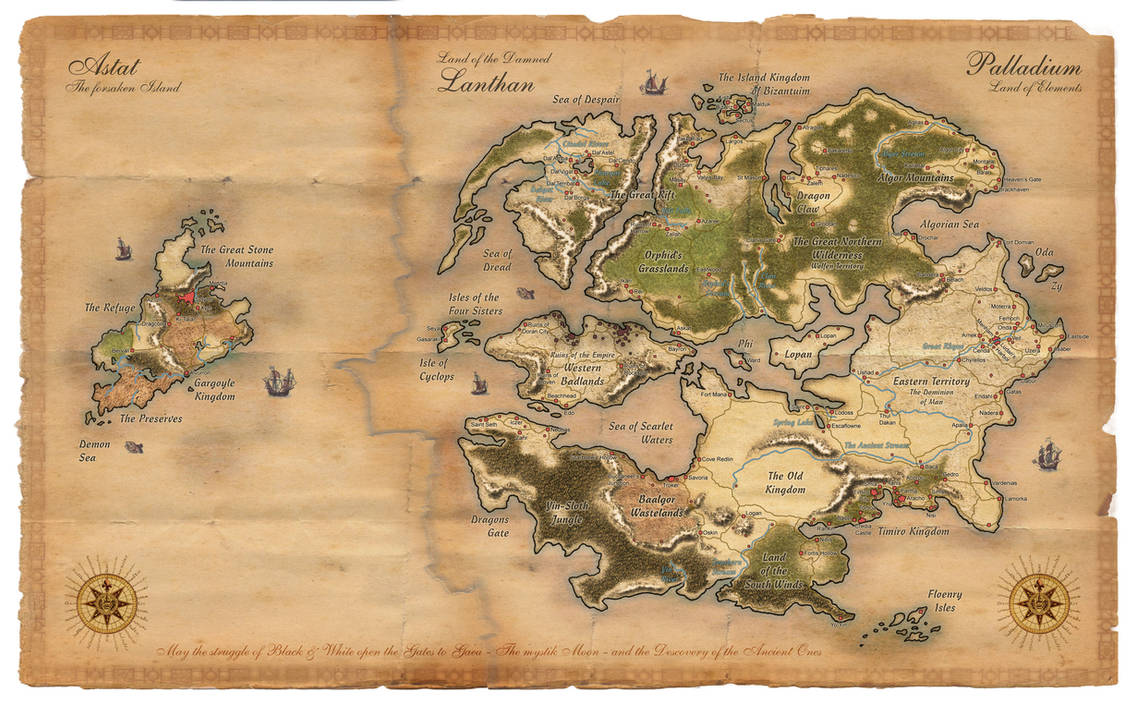 |
| Image Source: https://www.deviantart.com/dawn2069ms/art/Palladium-Fantasy-Worldmap-61746603 |
The map of the world. A staple in fantasy games. The map may be something that the players know well, especially for well published settings, or it may be something only the GM knows. Both cases have their pros and cons.
If the players know the map it makes placing them geographically easier for the GM during each session. They can look at the map, decide where they next want to go, and then clearly and concisely tell the GM that. The players know where they are and where they are going, and the GM doesn't need to contend with player aimlessness or confusion.
The map can also present a way for the players to self direct. Maybe they see the name and icon of a strange ruin marked on the map and want to find out more. Such self direction is difficult when the map is unknown to the players and/or the characters. Which in turn puts the onus on the GM to drive the game from location to location and provide things for the player to do, at least early on.
The flip side however isn't all bad. Sometimes the players will see that lack of a bigger picture of the world as an incentive to go out and explore. The lure of the unknown is a powerful one, and the joy of a hex crawl or similar style of exploration focused game can be significant. In such cases it also bonds the characters by making them have a common point of reference for the world. They may be all from the same village, or they find themselves all new residents of a demiplane of a well known vampire named ... Brad? Regardless of their other commonalities and differences they are all aware of only a limited portion of the world they inhabit.
In such a case the GM should provide some teases to entice exploration. A range of dark hills to the east with a broken tower rising above the treetops. A sea to the south that the local fishermen say hides a place of great power. A well paved (in strange exotic materials ideally) that leads northward toward a rumored city of some other exotic or strange building material. These visual or verbal clues can set the players & their characters to put one foot in front of the other.
A valid third option of course is to have the characters get lost. Maybe the game is set in a familiar setting but due to circumstances the players find themselves in a portion of the word that is less inhabited and more wild. They are lost (barring some very clever use of skills to narrow things down), and must explore the local world until they can find a place to allow them to orient themselves, a city or town of sufficient size that one or more of them have heard of it and know at least approximately where it is.
At the beginning of the day, the GM needs to decide how to present the world to their players, and how important exploration will be for their game. The map, or lack thereof, can help to drive certain behaviors and open up certain options for both players and GMs alike. And at the end of that same day making some informed choices up front can help the GM to avoid the game progressing (or not progressing) in ways that they didn't intend.

No comments:
Post a Comment